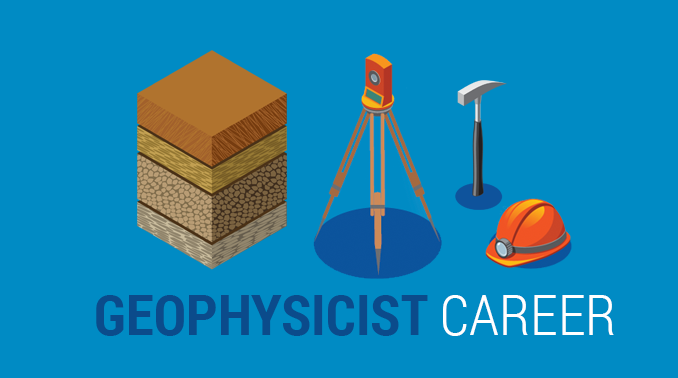All Categories
Featured
Table of Contents
Geophysical Survey - Salisbury Archaeology in Coolbellup Australia 2020

The main design for the radial structure of the interior of the Earth is the initial reference Earth design (PREM). Some parts of this model have been updated by current findings in mineral physics (see post-perovskite) and supplemented by seismic tomography. The mantle is mainly made up of silicates, and the borders between layers of the mantle follow phase transitions.

Schematic of Earth's magnetosphere. Circulations from left to.
Inside the magnetosphere, there are fairly thick regions of solar wind particles called the Van Allen radiation belts. Geophysical measurements are typically at a specific time and place. Precise measurements of position, in addition to earth deformation and gravity, are the province of geodesy. While geodesy and geophysics are separate fields, the 2 are so carefully connected that lots of clinical organizations such as the American Geophysical Union, the Canadian Geophysical Union and the International Union of Geodesy and Geophysics encompass both.
Geophysical Survey Services - Geophysical Test Methods in Padbury Western Australia 2020
A three-dimensional position is computed using messages from 4 or more noticeable satellites and referred to the 1980 Geodetic Reference System. An alternative, optical astronomy, integrates huge collaborates and the local gravity vector to get geodetic coordinates. This approach just provides the position in 2 collaborates and is more difficult to utilize than GPS.
Relative positions of 2 or more points can be determined utilizing very-long-baseline interferometry. Gravity measurements ended up being part of geodesy because they were needed to related measurements at the surface of the Earth to the reference coordinate system. Gravity measurements on land can be used gravimeters released either on the surface or in helicopter flyovers.
Sea level can also be determined by satellites utilizing radar altimetry, contributing to a more precise geoid. In 2002, NASA launched the Gravity Recovery and Climate Experiment (GRACE), where 2 twin satellites map variations in Earth's gravity field by making measurements of the distance between the two satellites using GPS and a microwave varying system. , which are studied through geophysics and area physics.
Geophysical Survey: Plotting Buried Traces Of Human Activity in Dalkeith Aus 2022

Considering that geophysics is interested in the shape of the Earth, and by extension the mapping of functions around and in the planet, geophysical measurements include high precision GPS measurements. These measurements are processed to increase their accuracy through differential GPS processing. When the geophysical measurements have been processed and inverted, the interpreted outcomes are outlined using GIS.
Lots of geophysics business have actually designed in-house geophysics programs that pre-date Arc, GIS and Geo, Soft in order to satisfy the visualization requirements of a geophysical dataset. Expedition geophysics is used geophysics that frequently uses remote picking up platforms such as; satellites, airplane, ships, boats, rovers, drones, borehole noticing devices, and seismic receivers.
For example, aeromagnetic data (aircraft collected magnetic data) collected utilizing standard fixed-wing airplane platforms must be fixed for electromagnetic eddy currents that are developed as the airplane moves through Earth's electromagnetic field. There are also corrections related to modifications in determined prospective field intensity as the Earth turns, as the Earth orbits the Sun, and as the moon orbits the Earth.
Greeley-evans Area 3d Geophysical Survey in Shoalwater WA 2021
Signal processing includes the correction of time-series information for unwanted noise or mistakes presented by the measurement platform, such as airplane vibrations in gravity data. It also includes the decrease of sources of sound, such as diurnal corrections in magnetic data. In seismic data, electro-magnetic data, and gravity information, processing continues after error corrections to consist of computational geophysics which result in the last interpretation of the geophysical data into a geological interpretation of the geophysical measurements Geophysics became a different discipline only in the 19th century, from the intersection of physical location, geology, astronomy, meteorology, and physics.
The magnetic compass existed in China back as far as the fourth century BC. It was not until great steel needles could be forged that compasses were utilized for navigation at sea; before that, they could not maintain their magnetism long enough to be useful.
By looking at which of eight toads had the ball, one might figure out the instructions of the earthquake.'s (1600 ), a report of a series of careful experiments in magnetism.
Geoscientist - College Of Science in Girrawheen Oz 2023
Geochemistry, Geophysics, Geosystems. National Aeronautics and Space Administration. Retrieved 13 November 2018.
Leipzig. Berlin (Gebruder Borntraeger). Runcorn, S.K, (editor-in-chief), 1967, International dictionary of geophysics:. Pergamon, Oxford, 2 volumes, 1,728 pp., 730 fig Geophysics, 1970, Encyclopaedia Britannica, Vol. 10, p. 202-202 Ross 1995, pp. 236242 Shearer, Peter M. (2009 ). Intro to seismology (2nd ed.). Cambridge: Cambridge University Press. ISBN 9780521708425. Stphane, Sainson (2017 ).
Latest Posts
Geophysical Survey Methods in Western Australia 2021
Geophysicist Salary in Wembley Downs Aus 2021
Bsc Geophysics in Safety Bay WA 2023